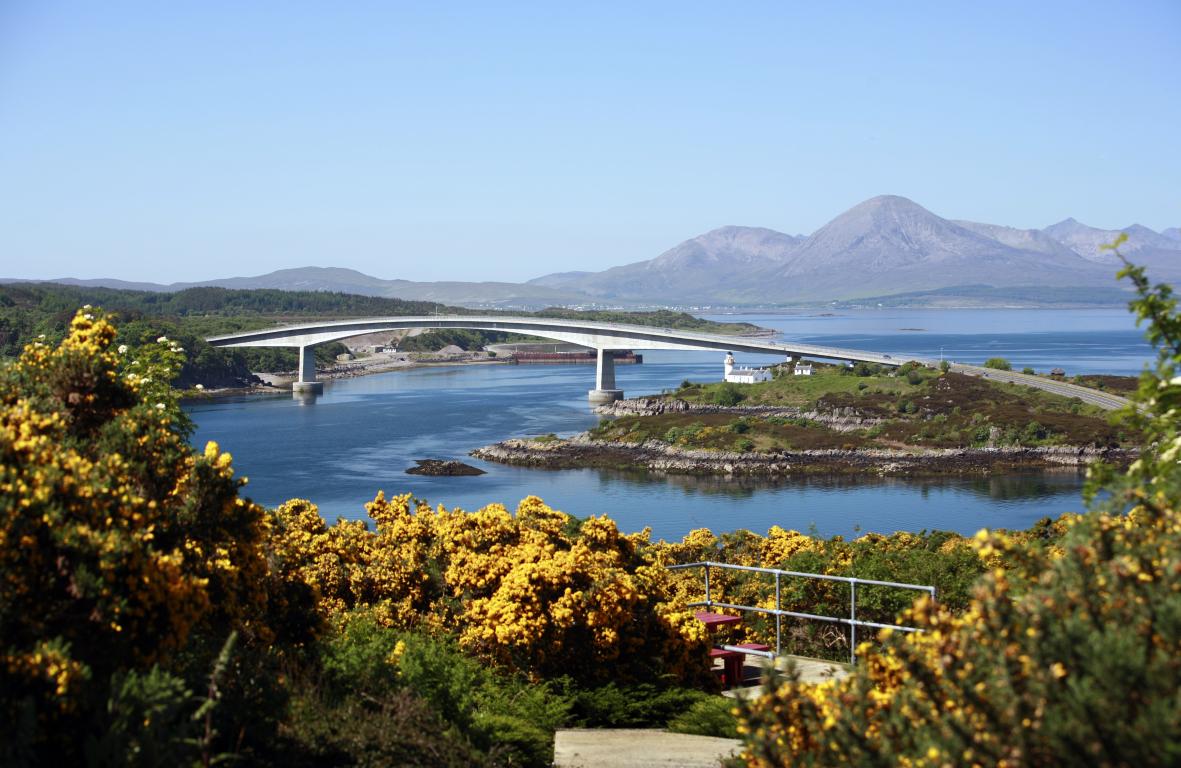
Far am Faicear Dà ‘Chailleach’ (A View of Two ‘Cailleachs’)
Seall sa Ghàidhlig
Ploc ‘lump’, pronounced ‘PLOCHK’, is a fairly inconsequential Gaelic word that is hardly likely to stir the imagination of the landscape-lover but, like an inconspicuous visitor to a collection of grand masters, Ploc a’ Chaoil ‘The Plock of Kyle’ bears regular witness to a small piece of West Highland magnificence. This piece of community-owned land is now a wonderful resource for local people and boasts a lookout with a commanding vista of Skye, Raasay and smaller islands, as well as Lochalsh and the peninsula of Applecross – not to mention the famous bridge that now connects Skye to the mainland.
The lookout, easily approached from adjacent to the old tolls office (when first built, a fare was demanded for crossing the bridge), has the relatively unique claim of allowing the traveller to view two mountains called Beinn na Caillich at the same time. A cailleach (‘KAL-yach’) is, in common parlance, an old woman, but in the Gaelic landscape she can represent an ancient female supernatural being who guarded the landscape and lived with the deer. Local tradition here has developed the idea further, as the mountain near Kyleakin, across the caol ‘kyle, narrow strait’, is said to be the burial place of the Gaelic heroine Gràinne, wife of the legendary hero, Fionn mac Cumhail (Finn MacCoul).
The other Beinn na Caillich sits prominently above Broadford on Skye and is reputed to be the last resting place of an entrepreneurial Norwegian princess, known somewhat jauntily as Saucy Mary, who strung a chain across the narrows here, demanding a toll from mariners who wished to avoid several days sailing around the Isle of Skye. Kyleakin, Caol Àcainn, is said to mean ‘the narrows of (King) Haakon’ whose fleet passed this way to and from the Battle of Largs in 1263, an inconclusive skirmish with the Scottish fleet, which nevertheless resulted in the loss of Norwegian sovereignty over territories in the west of Scotland.
From here, the traveller can go on to Skye and the Western Isles – bastions of the Gaelic language, culture and heritage.
 Isle of Skye Road Bridge to Sleat
Isle of Skye Road Bridge to SleatImage provided by VisitScotland/ Paul Tomkins